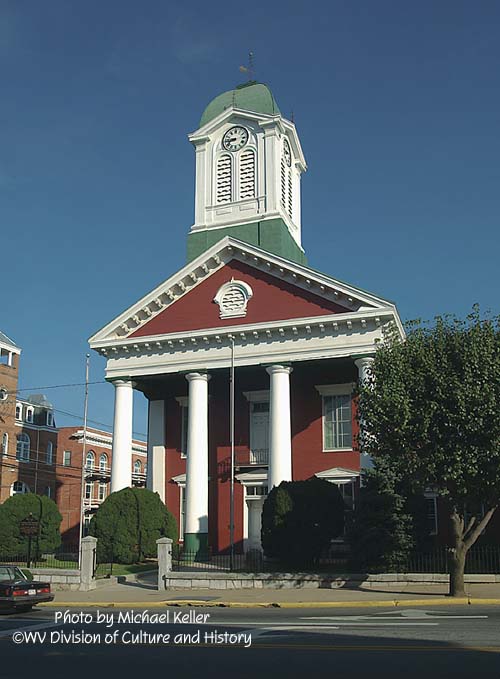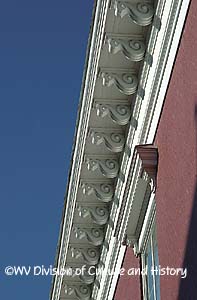


| The Jefferson County Courthouse throughout its history has been in the thick of controversy. Following John Brown’s three-day occupation of the US Armory and Arsenal at Harpers Ferry in 1859, he was captured and charged for “conspiring with slaves to commit treason and murder.” At the conclusion of his trial at the courthouse, Brown was found guilty of murder and treason and later hanged just several blocks away. The courthouse gained notoriety again during the southern coal mine strikes for unionization. The early 1920s saw the growing dissatisfaction of miners in the southern coal fields. Following the murder of Sid Hatfield in August 1921 and protests at the State Capitol, many armed themselves and marched into the coalfields near Blair, Logan, Sharples and Jeffrey. Federal troops quieted the area, but many were arrested for their protests. Leaders of the United Mine Workers of America were brought to trial at the Jefferson County Courthouse. Bill Blizzard and other demonstrators were held in the adjacent jail. Today, this building is threatened by demolition by the County Commission. The courthouse has been renovated at least twice–once following the Civil War and again in 1916. The main structure is designed in the Greek Revival style; the cupola represents a Georgian departure from the overall character of the building. -- SMP |
 |
 |
 |
|
Boone County Courthouse Braxton County Courthouse Brooke County Courthouse Clay County Courthouse Harrison County Courthouse Jefferson County Courthouse |
McDowell County Courthouse Marion County Courthouse Mercer County Courthouse Pocahontas County Courthouse Randolph County Courthouse Tyler County Courthouse Wood County Courthouse |
|
A History of West Virginia Courthouses Architectural Styles |
|